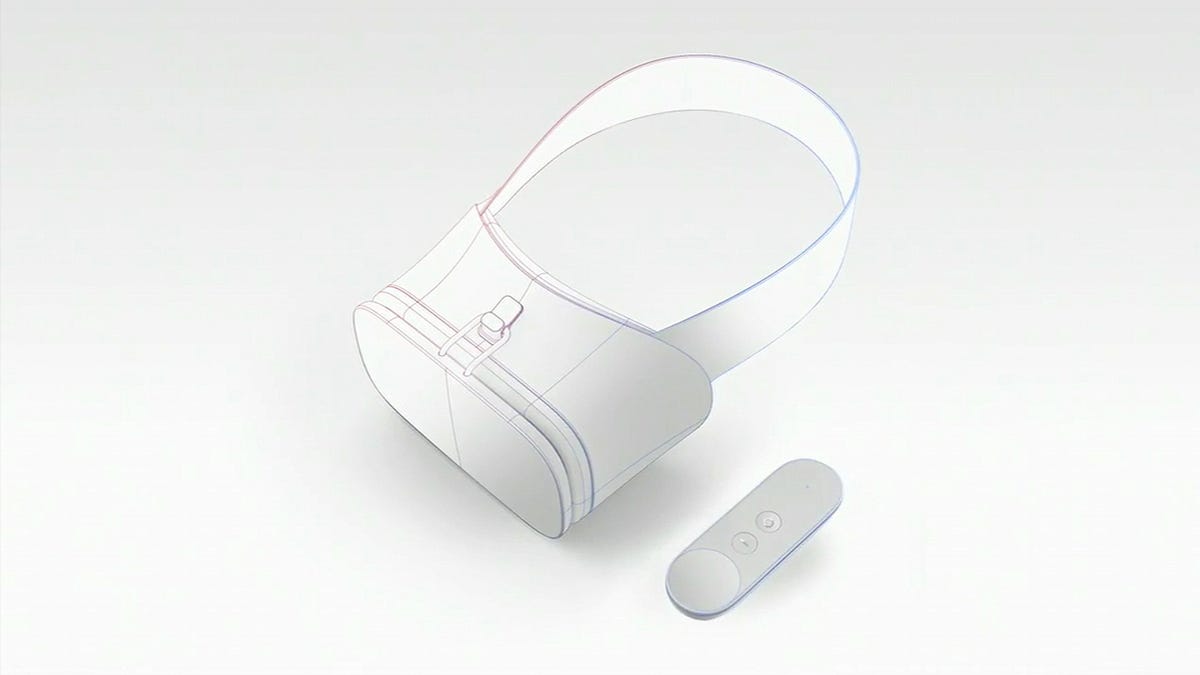5 things to know about Google's VR
Google's taking its Cardboard VR initiative to the next level, with a more capable VR platform.
True virtual reality -- not just Cardboard -- might be a part of your next Android phone. Android VR -- officially called Daydream -- is now a thing, and it's coming later this year alongside the release of Android N.
Google's VR aspirations are very similar to what Samsung is already doing with its Gear VR headset. You'll use a compatible phone as the "brain" of the headset and travel to far away lands to slay dragons, or flip pancakes in the middle of a forest. (At least, that's what Google demoed at Google I/O.)
Here are six things you need to know about Google's new VR platform.
1. It's called Daydream
Google is calling Android N's VR feature and platform "Daydream." That's not to be confused with the Daydream moniker Google gave the Android screensaver feature it introduced a few years back.
Daydream is built directly into Android N, so you won't need to install an additional app on your device. Once a phone is placed into a Daydream headset, "VR mode" automatically activates, turning your phone into the brains of Daydream.
Once your phone is locked in and your headset is on, you can move your head and look around the Daydream home app launcher. Daydream lets you access previously installed apps apps or games, as well as visit the Play Store to find new apps.
2. Here's what you'll need
In order to use Daydream you'll need:
- A compatible phone that runs Android N. None are available just yet, but Google's flasghip Nexus phone and LG's phones will be among the first to support it.
- A compatible Daydream headset. Google shared its hardware guidelines at Google I/O today, so the headsets aren't yet available.
- A Daydream controller. This is something you'll end up purchasing with your Daydream headset.
Google will release its own Daydream headset controller for the Nexus 6P, which should be available later this year. In addition to Google's headset, the company is providing its hardware partners with design guidelines for the headset and controller. Each manufacturer can then use the reference design to create its own headset and controller.
Google will require each headset to come with a Daydream controller.
3. The hardware requirements are strict
There's no word on just exactly what those requirements are, but the Android developer website states that the Nexus 6P running Android N motion-to-photon latency of under 20 milliseconds, the "speed necessary to establish immersion for the user to feel like they are actually in another place." It will also help cut down on motion sickness, so it's safe to say this is likely one of the benchmarks Google will set for Daydream devices.
As reported by CNET's Sean Hollister, if a device doesn't meet Google's performance requirements, the VR app won't open when the phone is placed in the headset.
According to Google, Samsung, HTC, ZTE, Huawei, Xiaomi, Alcatel, Asus, LG, and HTC have all committed to building Daydream ready phones.
4. Google already has app partners
Google's own YouTube, Street View, Play Movies, Play Store, and Google Photos will each have a VR app. Outside of Google, companies like CNN, MLB, NBA, Hulu, Netflix and the Wall Street Journal are all listed as app partners by Google.
5. And then there's the cost
Google wasn't forthcoming with price, but the company did tell CNET it expects headsets to be priced similarly to Samsung's Gear VR kit, totaling $800 for a Galaxy S7 ($700) and Gear VR headset ($100).
There's still plenty more to learn about Android N's Daydream implementation. Google is holding a session at its developer event on Thursday dedicated to all things Android VR, and we'll be there listening for any new information.
This story also appears in Spanish. Read: 5 cosas que tienes que saber sobre la realidad virtual de Google.


